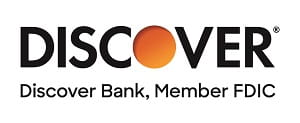Borrowers who have defaulted on federal student loans are required to pay “reasonable collection costs” in addition to repaying late fees, the principal balance and accrued but unpaid interest. Reasonable collection costs include attorney’s fees, collection agency charges and court costs, among other costs.
In practice, collection charges are based on an average cost of collecting defaulted student loans and not the actual costs incurred for each defaulted borrower. (Before March 1995, collection charges for defaulted Federal Stafford and PLUS Loans were based on actual costs, without any limits.) This is usually expressed as a flat rate.
There are two ways of expressing the collection charges as a flat rate.
- A percentage of the outstanding principal and interest balance of the loan. This is the amount that would be added to the loan balance to yield the payoff amount for the debt.
- A percentage deducted from each payment on the loan.
For example, under current rules the collection charges for defaulted Direct Subsidized and Unsubsidized Loans and PLUS Loans may be up to 25% of the outstanding principal and interest balance of the loans or up to 20% of each payment on the loans. (More precisely, the current rates are 24.34% and 19.58%, respectively.) Collection charges are deducted from all voluntary and most involuntary payments on a defaulted federal education loan.
The two figures are mathematically related. Let C be the collection charges (25%) expressed as a percentage of the outstanding principal and interest balance, B, and let D be the collection charges (20%) deducted from each payment. Then, the payoff amount, P, is the outstanding principal and interest balance plus the collection charges, or B + C x B. The product of D and the payoff amount should be the same as the collection charges (C x B). This yields the equation C x B = D x P = D x (1 + C) x B. Simplifying yields C = D + DC, from which D = C / (1 + C) or C = D / (1 – D). For example, if C is 25%, then D = 25% / (100% + 25%) = 20%.
Defaulting on a federal student loan significant increases the cost the debt because of both the collection charges and extra interest paid over the life of the loan. Consider a borrower who has defaulted on $30,000 in Direct Unsubsidized Loans. Wage garnishment of 15 percent of $24,000 in annual income yields student loan payments of $300 per month. There are three main options for repaying the defaulted loans:
- Deduct Collection Charges from Each Payment. Collection charges of $60 (20%) are deducted from each monthly payment before the remainder is applied to the interest and principal balance. So instead of taking 12.3 years to pay off the loan at $300 per month, it will take 18.3 years because the collection charges slow the repayment trajectory. The slower repayment trajectory also increases the total interest paid from $14,397 to $22,333. Thus, the borrower has $7,936 in extra interest and $13,176 in collection charges, for a total of $21,112 in extra costs because of the default.
- Payoff. The borrower could choose to pay off the loans in full, which would yield a payoff amount of $37,500, including $7,500 (25%) in collection charges.
- Rehabilitation. The borrower could rehabilitate the defaulted loans by consolidating them. This will yield a consolidation loan balance of $35,550 (including up to 18.5% in collection charges). The consolidation loan will be repaid in 16.5 years at $300 per month. The total interest paid will be $23,552 instead of $14,397, a $9,155 increase. Thus the combination of collection charges and interest from adding 18.5% in collection charges yields a total of $14,705 in extra costs due to the default.
Clearly, the cheapest option is to not to default in the first place, followed by making a lump sum payment to pay off the debt in full, followed by rehabilitation, followed by having collection charges deducted from every monthly payment.
As noted in the previous example, borrowers who rehabilitate their defaulted Direct Subsidized and Unsubsidized Loans and PLUS Loans through consolidation will have collection charges of up to 18.5% of the unpaid principal and accrued interest added to the loan balance at the time the rehabilitated loans are sold.
Defaulted Perkins Loans have a higher collection charge rate because the average loan balance is lower, so the collection costs represent a greater percentage of the outstanding principal and interest loan balance. The collection charges are 30% for first collection attempts and 40% for subsequent collection attempts. If a defaulted Perkins Loan is rehabilitated, collection charges of 24% are added to the loan balance.
Defaulted borrowers who seek a lump sum settlement may be able to get the collection charges waived as part of the settlement.










